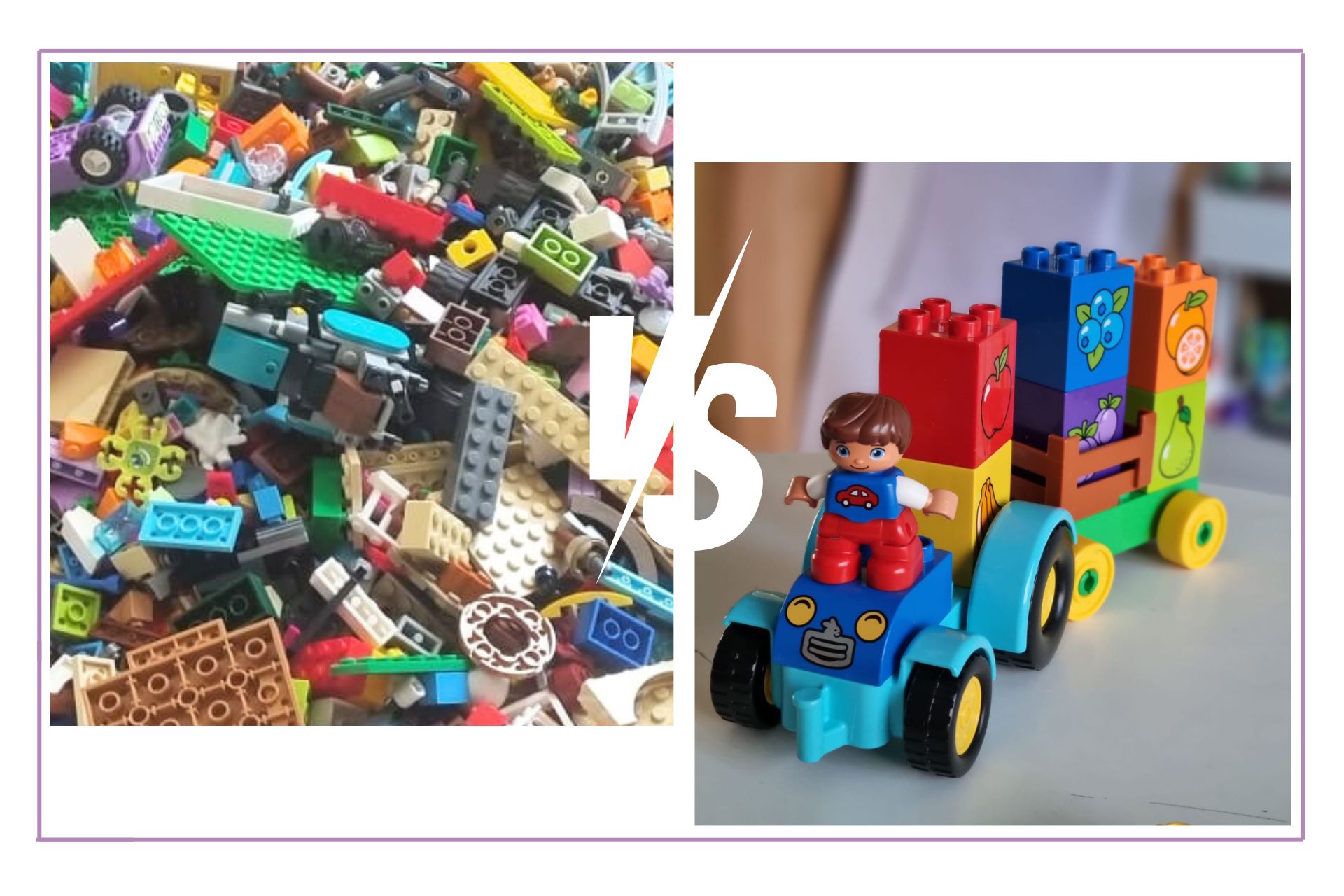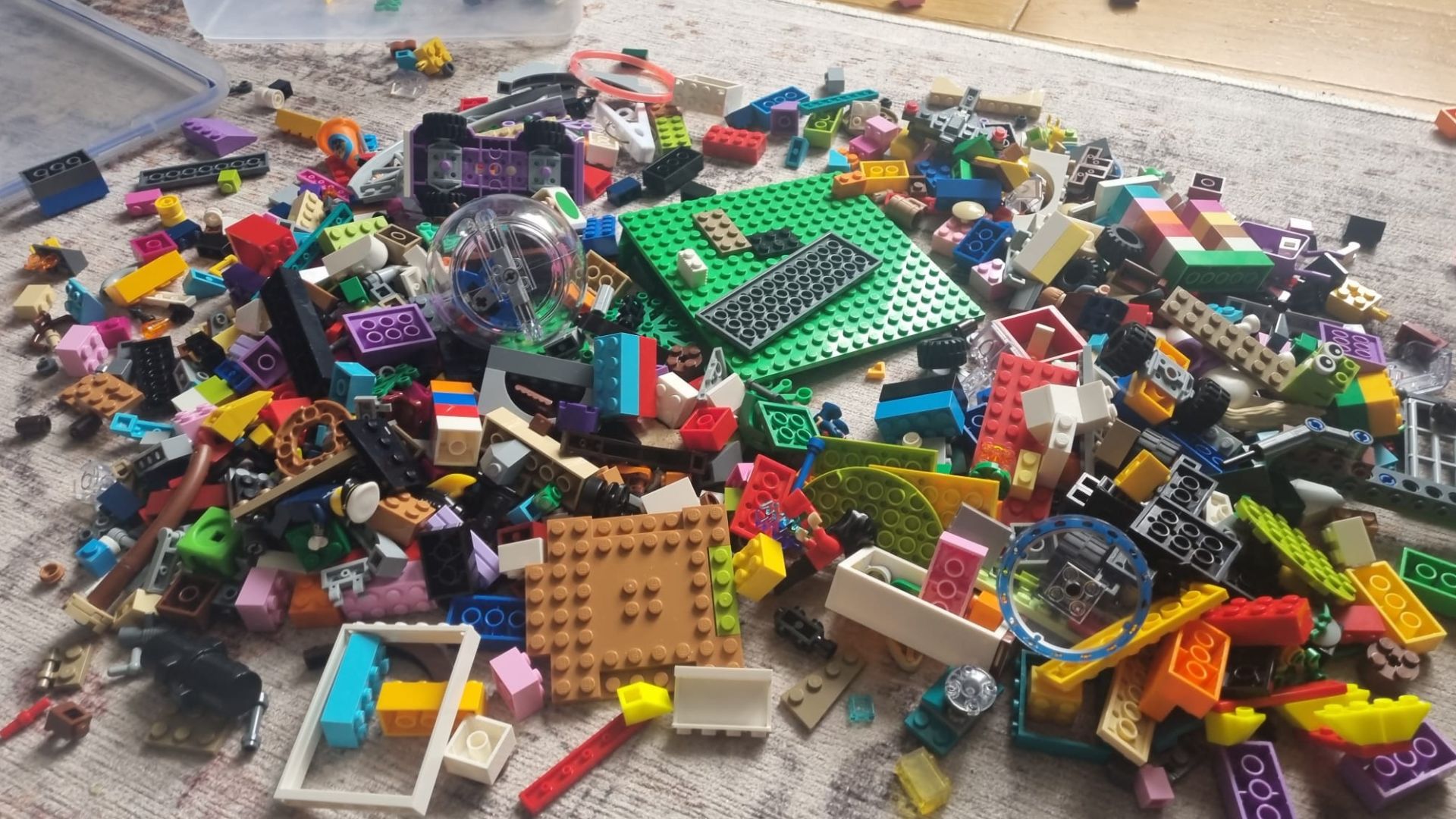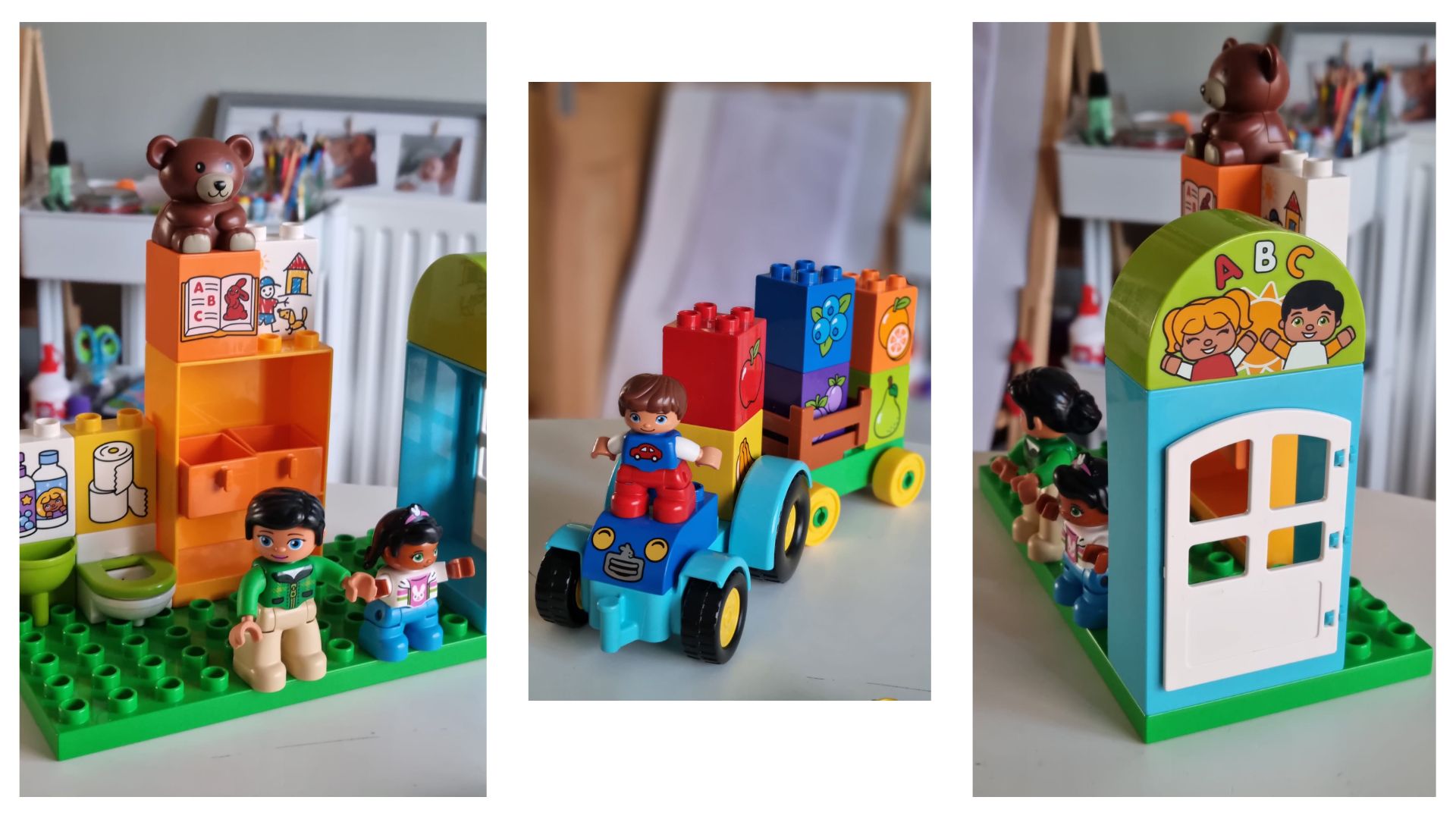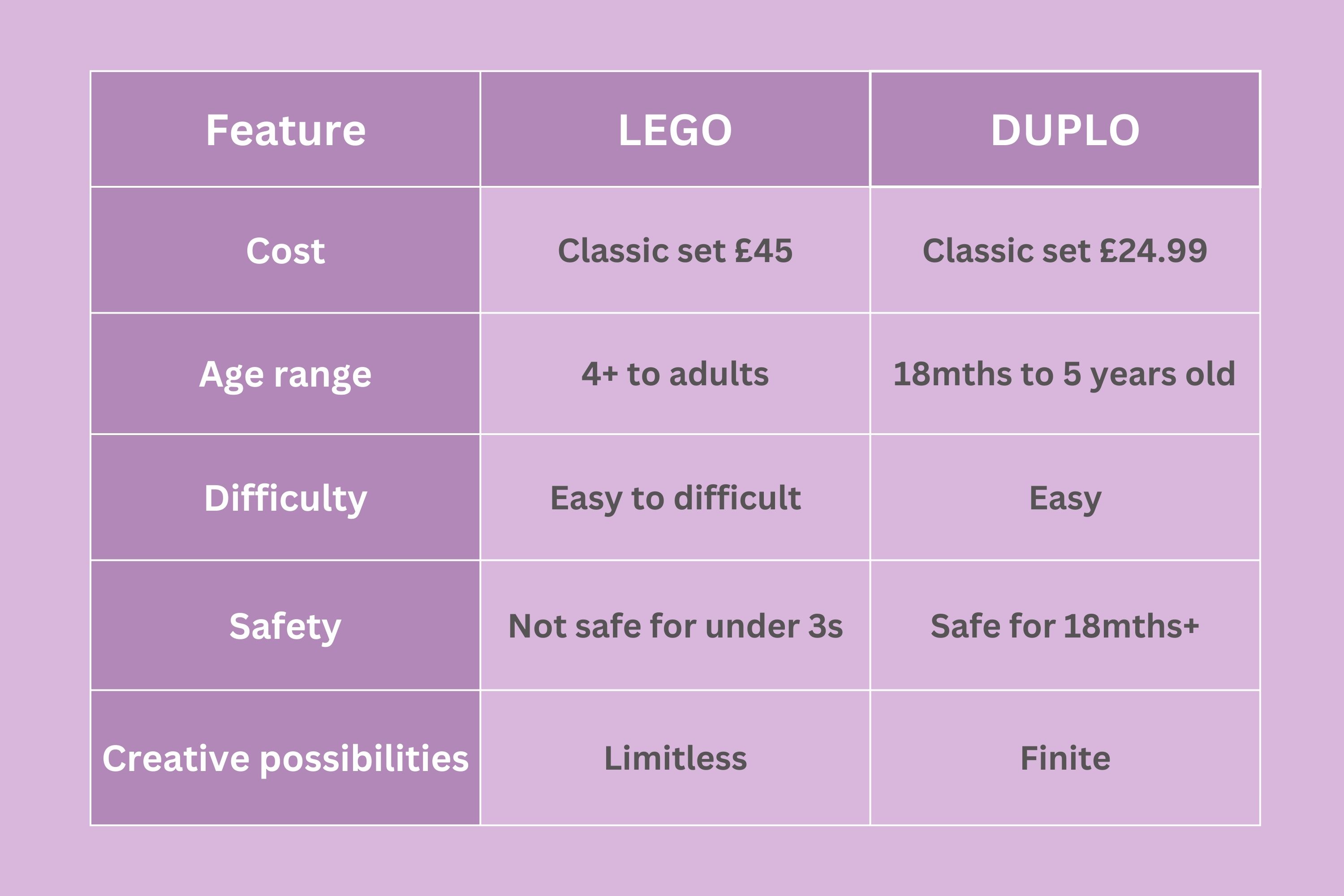LEGO DUPLO vs LEGO - we compare these popular toys in price, safety, playability and staying-power
LEGO DUPLO vs LEGO if you're in the throes of deciding, let us help...

LEGO DUPLO vs LEGO might be a conversation you're having with yourself, I know I wondered when to 'move' my kid onto LEGO, to graduate him to the smaller bricks. It's one of the main reasons I wrote this article to help parents who are pondering the same, and which is the best to buy and why.
Here at GoodtoKnow we take parent research very seriously, we know that parents are time-poor so we like to answer all the questions on potential purchases before you've had a chance to think of them. LEGO - whether it's Classic or DUPLO is a great buy, it’s one of the best kids toys of 2024 and keeps kids engaged and even some adults quiet too. When LEGO was invented, it was aimed at children, but now with all the epic brand licensing - Hello there, Star Wars and Friends sets - there are plenty for all age ranges to love. For parents though, sometimes they’re faced with the LEGO vs Playmobil dilemma (take a read of our article, it might help.)
I'm Stephanie Lowe family editor here at Goodto and I have and compare both the Classic LEGO set, for sale at £35.49 on Amazon and the LEGO DUPLO Number Train Toy set, on sale for £26.99 at Amazon for my son. This article is a rundown of all the questions I had and which I think is best to buy... though *spoiler* it really does depend. You might be wondering, are they the same? What is the difference? Will my older kids still play with DUPLO? So many questions, and we answer all of them, right here…
LEGO DUPLO vs LEGO
LEGO is designed for children from 6 years plus, while DUPLO is for children from 1½ to 5 years old. For easy play and safety reasons, DUPLO blocks and all the accessories are bulkier and larger than classic LEGO blocks, reducing choking hazards. DUPLO blocks are also easier to build and require less precision and coordination than LEGO.
Regardless of whether you go with LEGO or LEGO DUPLO, play really is a child’s work and it’s never done and Dr Gina Gomez de la Cuests agrees. The Clinical Psychologist and Founder of Play Included® tells us; “Play is the way that children can make sense of their experiences, their feelings, and the world around them.” And playing with LEGO bricks encourages just this. So, if you’re looking for some great bargains on LEGO this year then check out our cheap LEGO article.
What is LEGO?
LEGOs are plastic building blocks made of bright colours that are designed to easily stack and fit together with their signature interlocking studs, and are easy to take apart, making them reusable and rebuildable.
As our LEGO facts article will tell you, the brand originated from Denmark, LEGO comes from the Danish phrase 'leg godt', which means “play good.” LEGO has a huge range, with Classic sets that include the most basic elements: bricks, plates, wheels, windows, doors, etc.
Parenting advice, hot topics, best buys and family finance tips delivered straight to your inbox.

The intention is to inspire free building and allow imagination to take over, the options of what to build are infinite - and gender-free. Over the decades, LEGO has created thousands of sets for children 4 years old through adulthood.
A typical flagship LEGO set would usually consist of many coloured interlocking plastic bricks in configurations such as 2X2 (two columns of studs, in two rows), 2X3, 2X4, or more. Age range of classic LEGO is 4+.
What is DUPLO?
At twice the size of Classic LEGO bricks, DUPLO are large, colourful, and toddler-friendly. The word 'duplo' is Latin for Duplex, meaning double. The durable blocks snap together for a tight fit and even work with regular-sized LEGOs, so you can mix them together as children get older. (Our mind was blown when we learned this)

The basic LEGO DUPLO sets come in bins of 65 or 85, made up of a variety of primary colours and shapes, incorporating fun features like blocks with the numbers 1, 2, and 3. There are plenty of extras to add to your collection, like cars, trucks, animals, and people. The age range of DUPLO is 18 months - 4 years.
LEGO - pros and cons
Four pros;
- Quality - Regular LEGO bricks are built to last for generations, LEGOs are versatile and sturdy. They can withstand decades of tough play and still be as good as new.
- Creative - The precise edges and corners, and attention to detail, not to mention the tiny accessories that are available, encourage amazing creations.
- Size - Regular LEGOs have a wide variety of sizes (we're looking at you 'two-er'), which help create structures, and develop fine motor skills, social skills, and dexterity.
- Capacity - Because regular LEGO blocks come in more sizes and shapes, the range of what can be created is truly infinite. These options create a wider capacity for what can be built, pushing the bounds of a child’s imagination.

Two cons;
- Size - Because regular LEGO bricks are made up of tiny pieces, they are a choking hazard for children under the age of four. Because of this size, they are a nightmare to tidy up quickly and easily (though you could try this amazing LEGO hack)
- Pain level - Even having gone through labour, the pain level of unsuspectingly stepping on LEGO is a firm 9.5/10. Socks or no socks, it's horrific. The smaller the piece the sharper the pain. It’s definitely good motivation to encourage your little ones to get into the habit of putting things where they belong when they’re done playing.
DUPLO - pros and cons
Two pros;
- Size - DUPLOs are nice and chunky, twice the size of classic LEGO. This makes them the better choice for younger builders. Plus, having bricks your younger kids can hold and use alongside classic LEGO means there's more chance they will all play together. *fingers crossed*
- Quality - Like LEGO, DUPLO is a high-quality product that really will stand the test of time - handed down for generations.
Three cons;
- Price point - DUPLO is high-end on the price scale compared to other branded blocks of the same size.
- Playability - Even though they're for younger kids, DUPLO are notorious for their tight fit, making it frustrating for younger ones to grip and pull apart.
- Shelf life - While the larger size is a pro, it's also a con as it means there's less precision in building, so kids tend to lose interest in building with them by about 5 years old. Though this isn't a hard and fast rule, so just pay attention to your kid and their preference.
LEGO vs LEGO Duplo - our verdict
Both are winners, to be fair. My son is almost six and he has had and played with both of these types of bricks and still now doesn't shy away from DUPLO, though some of his friends have declared them 'baby toys' that's not a narrative we subscribe to in our home, so the DUPLO still come out. He likes to pretend the DUPLO people are the giants. Especially as you can still use them with classic LEGO - they click together (try it!) Though, the general rule is to 1/4 the number of studs needed from the DUPLO brick to fit a regular LEGO Brick.
Regular LEGOs and DUPLOs are both excellent options for any kids, though if you have young children, start out with DUPLOs. The DUPLO blocks are the best and safest option for younger builders. They’re a great choice for 1-year-olds up to the age of 4 and a fun introduction to the world of construction.
Once children reach 4 years old, it’s a good time to introduce them to the Classic LEGO bricks and encourage collaborative play between both sets, then when you're ready donate the DUPLO for charity as you continue to no doubt build on the LEGO haul.
If you're looking for more toy inspiration take a look through our 20 best toys for 10 year olds or 26 best toys for 5 year olds and if you're after a hit of nostalgia then definitely stop by our 35 best toys of the 90s - we all wanted a Mr Frosty, right?
Stephanie has been a journalist since 2008, she is a true dynamo in the world of women's lifestyle and family content. From child development and psychology to delicious recipes, interior inspiration, and fun-packed kids' activities, she covers it all with flair. Whether it's the emotional journey of matrescence, the mental juggling act of being the default parent, or breaking the cycle of parenting patterns, Stephanie knows it inside out backed by her studies in child psychology. Stephanie lives in Kent with her husband and son, Ted. Just keeping on top of school emails/fundraisers/non-uniform days/packed lunches is her second full-time job.